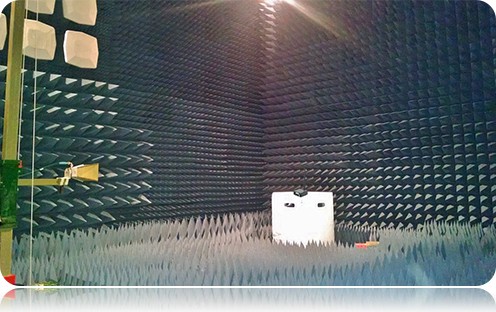
We offer complete service for testing and approvals or wireless devices from start to finish. This begins with an initial review of your product and market requirements. We will then determine all of the applicable regulatory EMC requirements and perform the regulatory testing. We will also ascertain and gather all required documentation and exhibits, complete all official forms and documentation, and obtain the certifications necessary that enable you to market your wireless products. The following briefly describes the processes for FCC, ISED Canada, and the European Union.
We are an ISO 17025 accredited EMC Test Laboratory and our test labs are registered with the FCC and ISED Canada.
United States of America
- Regulatory Authority – Federal Communications Commission (FCC)
- Standards/Regulations – FCC Code of Federal Regulations 47CFR
- 47CFR contains FCC Parts 0 through 199, each relevant to specific wireless communications technologies.
- Certification is required – Test data, documentation, and application forms are submitted for review. Upon completion and approval, a Grant of Certification is issued for the product.
- Labeling – Specific product and package labeling pursuant to FCC regulations is required.
- Information to the user – Specific information must be provided to the end user of the product.
- RF Exposure – All wireless devices are subject to FCC regulations for RF Exposure and protection of the end user from RF fields.
Canada
- Regulatory Authority – ISED Canada Certification and Engineering Bureau
- Standards/Regulations – ISED Canada Radio Standards Specifications
- Certification is required – Test data, documentation, and application forms are submitted for review. Upon completion and approval, a Technical Acceptance Certificate (TAC) is issued for the product.
- Labeling – Specific product and package labeling pursuant to ISED Canada regulations is required.
- Information to the user – Specific information must be provided to the end user of the product.
- RF Exposure – All wireless devices are subject to ISED Canada regulations for RF Exposure and protection of the end user from RF fields.
European Union
- Regulatory Authority – European Commission
- Standards/Regulations – Radio Equipment Directive (RED) contains the legal requirements. The European Telecommunications Standards Institute (ETSI) Standards apply to radio devices (transmitters & receivers). ETSI published standards contain both harmonized and non-harmonized standards. The use of harmonized standards gives the manufacturer presumption of conformity with the requirements of the RED.
- Role of a Notified Body – If the manufacturer uses Harmonized standards to show compliance of their device for radio requirements, then the use of a Notified body is not required. A Notified Body is consulted when no harmonized standards exist for the specific product, or when a manufacturer elects not to use Harmonized standard in part or in full.
- Compliance is based on a manufacturer’s Declaration of Conformity (DoC).
- Labeling – Specific product labeling is required.
- RF Exposure – All wireless devices are subject to regulations for RF Exposure Safety and protection of the end user from RF fields.
- Cybersecurity Compliance Testing
Cybersecurity Compliance Testing
The European Cyber Resilience Act made complying with cybersecurity standards in the Radio Equipment Directory (RED) mandatory as of 8/1/2025. D.L.S. offers compliance testing to the EN
18031-X:2024 series of harmonized standards:EN 18031-1 Part 1: Internet connected radio equipment
EN 18031-2 Part 2: Radio equipment processing data, namely
Internet connected radio equipment, childcare radio equipment, toys radio
equipment and wearable radio equipment.EN 18031-3 Part 3: Internet connected radio equipment
processing virtual money or monetary valueThe United States has in process a program called US Cyber Trust Mark, overseen by the FCC to address IoT accessed smart device protection. Canada recently passed the Critical Cyber Systems Protection Act which aims to enhance cybersecurity protection. It can be expected that more
formalized cybersecurity requirements will be developed on a global basis.Learn more at Cybersecurity Evaluation and Testing